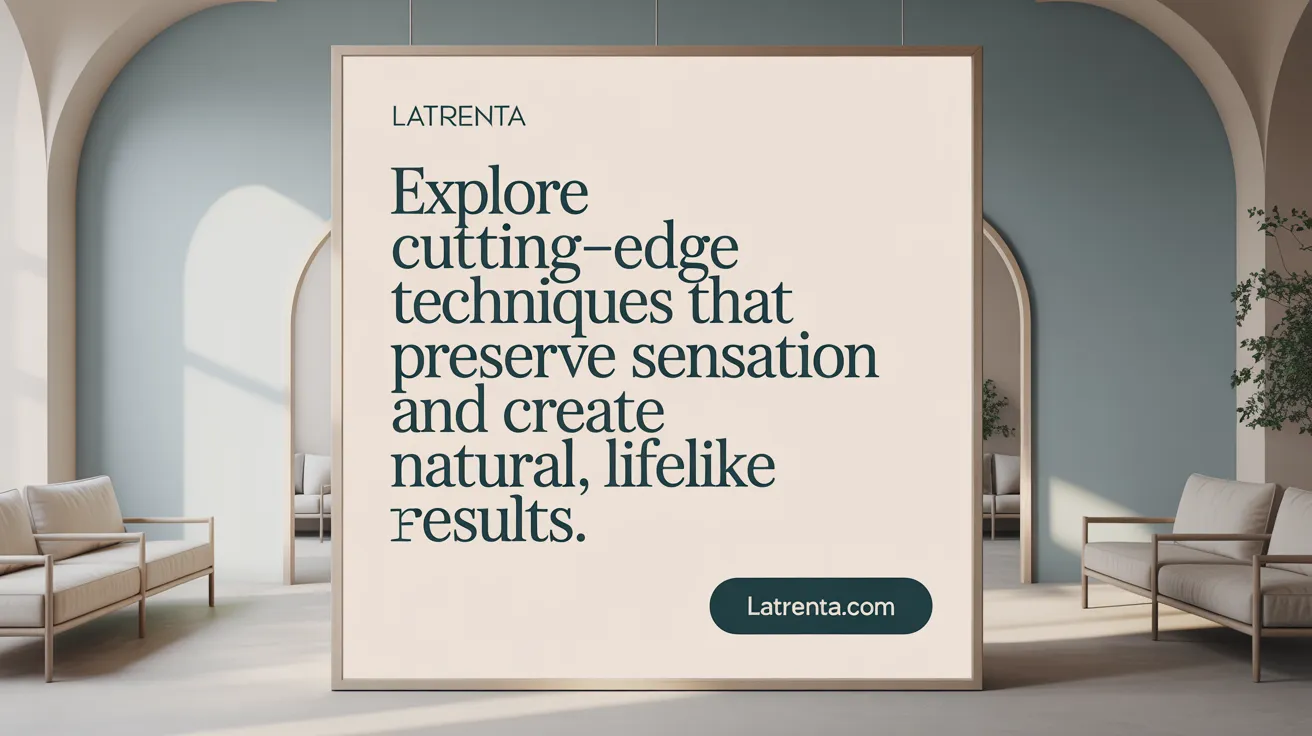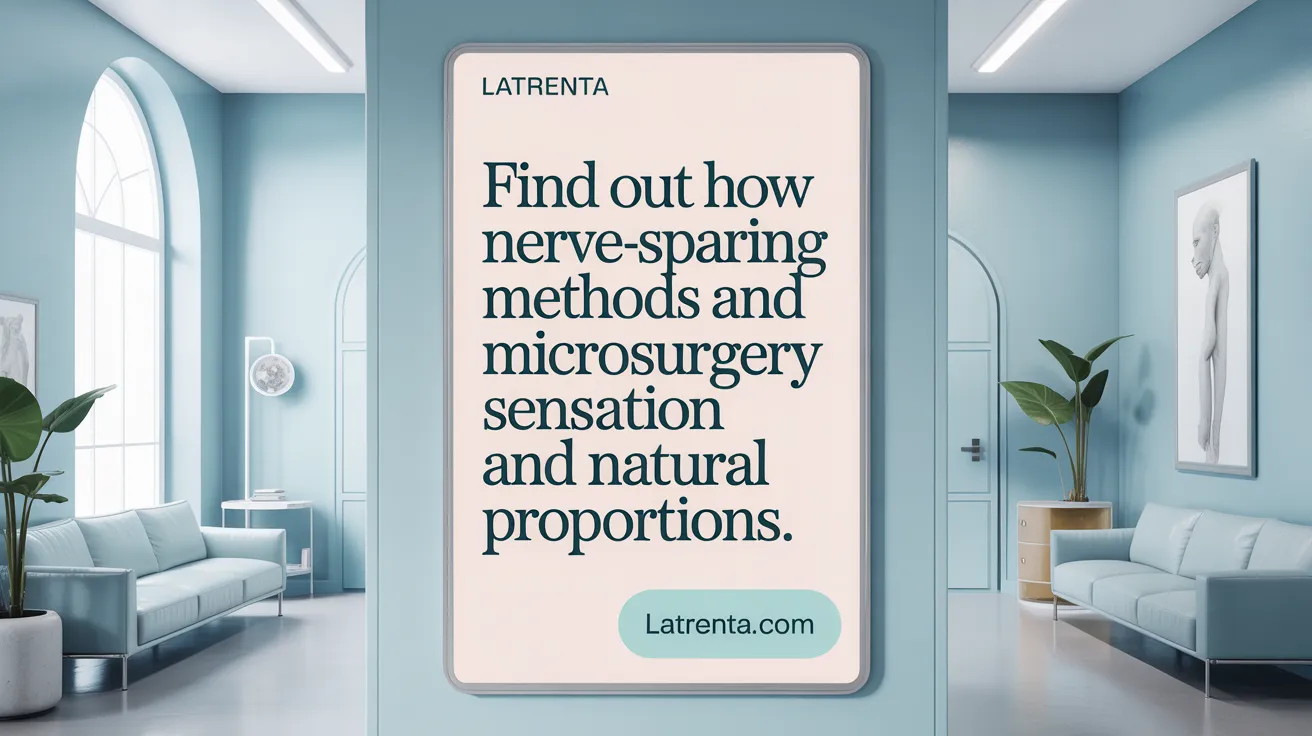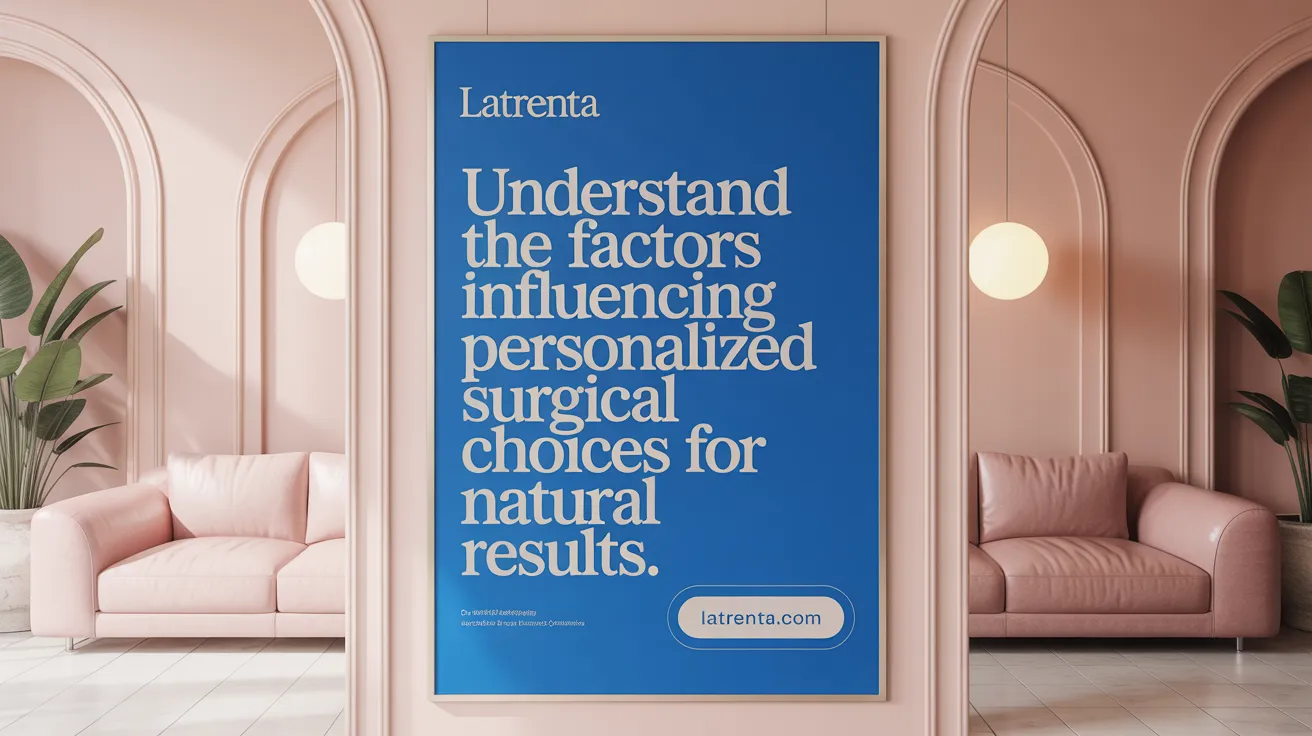Embracing Innovation in Breast Aesthetics
As the pursuit of natural-looking results in breast surgery gains momentum, advanced options empower patients through personalized approaches, combining innovative techniques and materials. This article delves into the leading breast surgery modalities designed to harmonize aesthetic desires with authentic appearance and sensation preservation.
Key Facts on Natural Breast Surgery and Reconstruction
- Advanced implant options include cohesive silicone gel implants and gummy bear implants for natural feel and shape.
- Autologous reconstruction uses patient's own tissue from areas like the abdomen or thighs for more natural appearance and durability.
- Microsurgical techniques such as DIEP, TRAM, and APEX flaps connect tiny blood vessels ensuring healthy, living tissue transplantation.
- Flap reconstructions offer natural feel, lifetime durability, and varied donor site options, with efforts to minimize scars and morbidity.
- Hybrid procedures combine smaller implants with fat grafting to enhance contour, texture, and reduce risks associated with larger implants.
- Emerging innovations include robotic nipple-sparing mastectomy and sensory restoration technologies like neural interfaces.
- Advancements such as dissolvable meshes and better implant materials contribute to long-term, natural-looking results with preserved sensation.
- Surgeons preserve natural sensation by nerve-sparing techniques and nerve grafting, improving aesthetic and functional outcomes.
- Surgical planning considers patient anatomy, tissue quality, implant shape and placement to tailor natural aesthetic results.
- Patient education involves detailed discussions on procedures, recovery timelines, risks, and long-term monitoring to ensure realistic expectations and satisfaction.
1. Implant-Based Breast Surgery: Tailored Precision for Natural Enhancement

What are the advanced breast surgery options available that aim for natural aesthetic results?
Achieving natural-looking breast augmentation involves a combination of sophisticated surgical techniques, state-of-the-art implants, and personalized planning. Modern options focus on creating results that complement individual anatomy while maintaining a soft, natural feel.
One of the most significant advancements is the use of innovative silicone gel implants, particularly cohesive gel (gummy bear implants).
2. Autologous and Flap Reconstruction: Harnessing the Body’s Own Tissue for Natural Results

What are the main differences between implant-based breast reconstruction and autologous tissue reconstruction?
The main differences between implant-based and autologous tissue breast reconstruction lie in their technique, outcomes, and recovery. Implant-based reconstruction involves placing silicone or saline implants, which typically results in shorter surgery and recovery times but may lack the natural feel and carry risks such as capsular contracture, infection, and implant-related complications. Autologous reconstruction uses the patient’s own tissue, such as from the abdomen, thighs, or back, providing a more natural appearance, feel, and longevity, but requires longer, more complex surgery with donor site scars and increased initial recovery time. Patient-reported outcomes generally favor autologous reconstruction for aesthetic satisfaction and long-term results, while implant-based options can offer quicker procedures and satisfaction related to shape and volume. Both techniques involve advanced microsurgical methods, especially in flap procedures like DIEP and APEX, where tiny blood vessels are reconnected under a microscope to ensure tissue viability.
Techniques and Microsurgical Methods for Flap Viability
Flap surgeries like DIEP, TRAM, and APEX utilize microsurgical techniques to connect small blood vessels, ensuring the transplanted tissue remains healthy and well-vascularized. This meticulous process involves vascular anastomosis—attaching arteries and veins from the donor tissue to those in the chest—to preserve blood flow. Advanced surgical tools, sterile techniques, and detailed preoperative imaging contribute significantly to successful outcomes and minimize risks.
Advantages of Flap Surgery: Natural Feel, Longevity, and Donor Site Options
One of the primary benefits of flap reconstruction is a natural feel that closely mimics natural breast tissue due to the use of real tissue. Since the tissue is living, the results can last a lifetime with minimal maintenance, unlike implants that often require replacement every 10-15 years. Donor site options are varied, including the abdomen (most common with DIEP or TRAM flaps), back (latissimus dorsi flap), thighs (PAP, TUG flaps), and buttocks (gluteal flap), providing flexibility based on individual anatomy. This versatility allows surgeons to tailor procedures according to the patient’s body and recovery expectations.
Minimizing Scarring and Donor Site Morbidity
Modern flap techniques prioritize minimal scarring, with many incisions hidden within natural body creases. Preserving muscle, such as in DIEP flaps, reduces donor site morbidity, maintaining strength and function—unlike older procedures like TRAM that involved muscle removal. Meticulous planning, microsurgical precision, and perioperative care help reduce complications, scars, and recovery times. Learn more about minimizing scars in APEX flap surgery.
Hybrid Reconstruction: Combining Implants and Fat Grafting
Some patients benefit from hybrid approaches that combine autologous tissue with implants or fat grafting. For instance, adding fat transfer over a flap or implant enhances contour, texture, and volume. This innovative technique improves natural appearance and feel, while also reducing implant size and related risks like capsular contracture.
Advances in Nerve Preservation and Sensation
Emerging innovations include procedures like robotic nipple-sparing mastectomy, which help preserve breast sensation by avoiding nerve damage. Selective nerve preservation during reconstruction can improve patient satisfaction, emotional well-being, and sexual function.
Patient Selection and Timing: Immediate vs. Delayed Reconstruction
Choosing between immediate or delayed flap reconstruction depends on medical factors, cancer treatment, and patient preference. Immediate reconstruction offers the benefit of one surgery with fewer hospital visits and quicker psychological healing. Delayed reconstruction may be favored if post-radiation therapy or extensive surgery makes immediate reconstruction less ideal. In all cases, thorough preoperative planning and postoperative care are essential to achieve the best natural and aesthetic results. Learn about immediate versus delayed reconstruction.
Surgical Innovations Enhancing Natural Breast Outcomes

What surgical techniques and innovations enhance natural-looking outcomes in breast surgery?
Recent advancements in breast surgery focus on combining aesthetic excellence with function preservation, ensuring results that look and feel natural. One notable innovation is the robotic nipple-sparing mastectomy, performed using a single-port system that minimizes nerve damage and preserves sensation.
This minimally invasive approach utilizes an armpit incision, guided by a flexible robotic camera, allowing surgeons to remove breast tissue while safeguarding skin, nipple, and nerves. Studies, including those from UT Southwestern, show approximately 80% of patients retain or regain breast sensation after this procedure, significantly improving post-surgical quality of life.
Beyond surgical technique, the use of advanced materials like cohesive silicone implants further elevates natural results. These highly cohesive, 'gummy bear' implants maintain their shape even if ruptured and have a soft, natural feel. Thinner shells and surface modifications help reduce rippling and instability, making the augmented or reconstructed breast appear more lifelike.
Supportive technologies such as dissolvable mesh scaffolds are also transforming outcomes. These meshes provide temporary support for implants, promoting tissue integration and reducing issues like capsular contracture—an excessive scarring response that causes firmness and distortion.
Innovations extend into sensory restoration with projects like the Bionic Breast, which aim to connect neural pathways using electrical stimulation and neural interfaces. Although still in development, this technology has the potential to restore sensation and improve body image, making breast reconstructions not just aesthetically pleasing but also functionally complete.
Together, these surgical advancements and material innovations are pushing the boundaries of natural-looking breast surgery, emphasizing not only size and shape but also sensation and long-term function.
Preserving Sensation and Achieving Proportionate, Realistic Results

How can surgeons preserve breast sensation and achieve realistic, proportionate results?
Surgeons capable of maintaining breast sensation focus on advanced microsurgical breast reconstruction techniques and meticulous surgical planning. A critical approach is the use of nerve-sparing techniques during mastectomy procedures, where surgeons identify and preserve important nerves that supply sensation to the breast and nipple area. This method minimizes nerve damage, greatly increasing the chances that sensation is retained post-surgery.
In cases where nerves are unintentionally severed, nerve grafting procedures, such as the novel Resensation® technique, can reconnect these nerves, promoting sensory recovery over time. These microsurgical nerve reconnections are performed using precision instruments and microscopes, ensuring the healthy regeneration of nerve fibers.
Nipple-sparing mastectomy approaches also play a vital role. This technique involves removing breast tissue while preserving the nipple-areola complex and the skin envelope, which not only enhances aesthetic outcomes but also helps maintain sensitivity. The incisions for nipple-sparing procedures are typically placed in inconspicuous areas, such as within the natural breast crease or around the areola, further aiding in a natural appearance.
The training of specialized surgeons enhances the success rate of these complex procedures. Surgeons like Drs. Anne and Ziv Peled have honed their skills through dedicated coursework and hands-on microsurgical experience, allowing them to perform nerve-preserving strategies effectively.
Combining sensation preservation with reconstructive options, such as fat grafting or implant placement, ensures the reconstructed breast resembles a natural one in both appearance and feeling. This multi-faceted approach contributes to realistic, proportionate results that meet the patient’s aesthetic and sensory expectations.
Ultimately, achieving natural-looking, proportionate breasts with preserved sensation hinges on the surgeon’s expertise, careful surgical planning, and the application of the latest microsurgical techniques. These innovations are transforming breast reconstruction, offering patients results that restore confidence, enhance aesthetics, and preserve vital sensations.
Implants, Fat Grafting, and Hybrid Procedures: Complementary Roles in Natural Augmentation
What roles do implants, fat grafting, and hybrid procedures play in natural breast augmentation?
In the quest for natural-looking breast augmentation, different techniques serve distinct but complementary functions. Implants are primarily used to provide the core volume needed for size enhancement and shaping. They come in various types, such as silicone gel implants, saline breast implants, and gummy bear (teardrop-shaped), with placement options under or over the muscle to optimize natural contours.
Fat grafting, on the other hand, is an autologous technique that involves harvesting fat from other body areas through liposuction, purifying it, and injecting it into the breasts. This method enhances the breast’s contour, softness, and produces a subtle volume increase. Because it uses the patient's own tissue, fat grafting results feel more natural and are less likely to cause rippling or visibility issues common with larger implants.
How do hybrid procedures combine these approaches?
Hybrid breast augmentation combines the strengths of both implants and fat grafting. This approach utilizes smaller implants to establish a stable structure while augmenting the results with autologous fat transfer. Such combination procedures help improve overall breast fullness, smooth out irregularities, and create a more seamless, natural appearance.
This method also enhances the aesthetic outcome by allowing for better shaping of the breast’s natural anatomy, especially at the lower pole, and addressing asymmetries more precisely. By reducing implant size and adding fat, physicians can diminish the risks associated with larger implants, such as capsular contracture, rippling, or implant visibility.
Additional benefits of incorporating fat grafting
Beyond aesthetic improvements, fat grafting contributes additional benefits like body contouring through liposuction of donor areas, improved skin quality, and enhanced texture. It can camouflage implant rippling and irregularities, especially in patients with thin tissue coverage.
How hybrid approaches reduce risks and improve outcomes
A significant advantage of hybrid procedures is the potential to use smaller implants without sacrificing fullness or natural contours. The smaller size minimizes associated risks like rupture, capsular contracture, and implant displacement. Combining fat grafting also reduces the likelihood of visible rippling or palpability of the implant.
Overall, the roles of implants and fat grafting in hybrid breast augmentation are highly complementary. They work together to deliver natural aesthetics, improved patient satisfaction, and a reduction in complications linked to larger implants. This tailored approach enables surgeons to refine the final look, balancing volume, softness, and contour for the most natural results.
Specialized Surgical Methods for Natural-Looking Breast Results
What specialized surgical methods promote natural-looking breast results?
Achieving a natural aesthetic in breast surgery involves a combination of advanced techniques and carefully selected materials.
One significant approach is the use of hidden scar techniques, which involve strategic incision placements such as along natural breast creases, around the areola, or in less visible areas like the armpit. These methods help preserve the natural contour and minimize visible scars, contributing to an authentic appearance.
Microsurgical advancements, including robotic nipple-sparing mastectomy, also play a crucial role. This minimally invasive surgery maintains the breast’s nerve supply and blood flow, reducing nerve damage and preserving sensation, which is vital for natural feeling and appearance post-reconstruction.
On the implant front, the latest silicone gel-filled options—commonly called "gummy bear implants"—are designed to mimic natural tissue more accurately. These form-stable, cohesive gel implants maintain their teardrop shape even if they rupture, offering shape stability, reduced rippling, and a softer, more natural feel.
For augmentation, fat grafting has gained popularity. This technique involves harvesting fat from areas like the abdomen or thighs via liposuction, purifying it, and injecting it into the breasts. It provides a subtle enhancement that feels and moves like natural breast tissue, making it ideal for patients seeking a modest increase or contour improvements.
In addition to implants and fat transfer, surgical lifts and reductions help maintain a youthful, natural breast sag correction. Techniques such as the vertical or lollipop lift, along with conservative tissue removal, restore the natural position of the breasts while preserving shape.
For those needing correction or refinement, revision surgeries are now utilizing newer materials and innovative techniques such as specialized implants or additional fat grafting. These procedures help refine results, correct asymmetries, and enhance the overall natural look.
In summary, the combination of minimally invasive incision techniques, advanced implant technology, fat transfer procedures, and surgical lifts form a comprehensive approach to natural-looking breast results.
More info on innovative techniques for natural breast results
Patients interested in these options often search for terms like "hidden scar breast surgery," "gummy bear implants," "fat grafting natural results," and "breast lift for youthful shape," to learn more about achieving their aesthetic goals with minimal visible signs of surgery.
Considerations in Choosing Techniques for Natural Breast Surgery Outcomes

What considerations influence the choice of surgical techniques to achieve natural breast surgery results?
Achieving a natural look in breast surgery depends heavily on personalized planning. Several factors influence the selection of surgical techniques, starting with the patient’s anatomy and tissue quality. For instance, thinner skin or limited natural tissue may guide a surgeon toward specific implant shapes or placement options to enhance the natural appearance.
The type, shape, and surface of implants also play vital roles. Silicone gel implants, especially cohesive or "gummy bear" types with teardrop shapes, tend to mimic natural breast tissue more effectively due to their pliability and contour. These are often placed under the muscle to provide better tissue coverage and minimize rippling.
Surgical approach—including the choice of incision site and implant placement—is tailored to patient anatomy. Common incision sites include inframammary (beneath the breast), peri-areolar (around the nipple), trans-axillary (armpit), and TUBA (through the navel). Placement can be submuscular (beneath the chest muscle) or subglandular (over the muscle), with submuscular often favored for a more natural, seamless look.
Lifestyle and cultural influences also shape decisions. A woman’s age, activity level, and cultural expectations might sway toward less invasive techniques or different implant profiles and shapes for tailored results.
Comprehensive counseling is essential. Preoperative discussions focus on aligning the patient’s aesthetic goals with realistic outcomes, safety considerations, and potential risks. This ensures an individualized plan that respects the patient’s preferences while maintaining safety and long-term satisfaction. For detailed information on these topics, see Breast Surgery Options and Choosing a Board-Certified Plastic Surgeon.
In sum, selecting the appropriate surgical techniques involves a nuanced understanding of anatomy, implant choices, incision and placement strategies, and personal lifestyle factors. Proper planning and expert guidance are crucial to achieving natural-looking breast surgery results.
Patient Education: Planning, Expectations, and Recovery for Natural-Looking Breast Procedures
How should patients be educated about surgical planning, expectations, and recovery in natural-looking breast procedures?
Patients considering natural-looking breast augmentation should receive comprehensive education about every stage of their surgical journey. This involves a detailed discussion of available options—such as breast implant options including saline breast implants, silicone gel implants, gummy bear implants—shapes, placement techniques, and fat transfer breast augmentation possibilities—and how these choices align with their individual anatomy, lifestyle, and aesthetic goals.
A clear explanation of realistic outcomes is essential. Patients should understand that achieving a natural look depends on meticulous surgical planning, including appropriate implant size in CCs, shape (round breast implants or anatomical teardrop implants), and positioning (submuscular breast implants or subglandular). Surgeons should also convey possible limitations, such as asymmetry or the need for future implant removal and replacement.
Understanding the surgical process helps set proper expectations. Patients should be informed about the procedure itself, whether it involves implant placement, fat transfer, or combined techniques, and comprehend the typical recovery timelines. Emphasizing that recovery varies based on individual health and procedure type prepares patients for what to expect.
Surgical process and recovery timelines
Surgical details, including anesthesia types and breast augmentation incision techniques like peri-areolar incision, inframammary incision, trans-axillary incision, or TUBA incision, should be explained thoroughly. Patients need to know that initial recovery may involve swelling, bruising, and mild discomfort, with most able to resume light activities within a few days to a week. Full healing, especially for implant or fat transfer procedures, can take several weeks, with final results often apparent after several months.
Managing drains and incision care
For surgeries involving drains, patients should be educated on care for these devices—keeping the area clean, recognizing signs of infection, and knowing the proper way to empty and maintain the drains. Proper incision care encompasses gentle cleaning, avoiding trauma, and monitoring for signs of infection or abnormal scar formation. Patients should also be informed about scar management techniques, such as silicone sheets or gels, to promote minimal scarring, as highlighted in advanced APEX flap surgery benefits and techniques.
Risks and long-term monitoring
Patients must be aware of potential risks, including capsular contracture, implant rupture, or rare conditions like BIA-ALCL. They should understand the importance of routine follow-up appointments, imaging, and monitoring to detect any complications early. For those with implants, long-term surveillance may involve MRI or ultrasound scans at recommended intervals, as discussed in breast implant safety and Ultrasound for post-operative implant monitoring.
Importance of follow-up and support
Continued follow-up ensures ongoing assessment of the surgical results and timely intervention if issues arise. Support from healthcare providers, including physical therapists and patient support groups, can greatly enhance recovery and satisfaction. Educating patients about maintaining healthy habits, such as avoiding smoking and managing weight, contributes to long-lasting natural results.
In summary, well-informed patients are better equipped to make educated decisions, adhere to post-operative care instructions, and achieve satisfying, natural-looking breast outcomes. Thorough patient education fosters confidence and fosters a partnership that promotes optimal aesthetic and health results.
Towards Truly Natural Breast Surgery Results
Advanced breast surgery options continue to evolve, blending innovative technology with personalized care to achieve results that honor each patient's anatomy and aesthetic desires. Whether through expertly selected implants, sophisticated flap techniques, or hybrid approaches, the goal remains consistent: to restore or enhance breast form with authenticity, sensation preservation, and minimal visible signs of surgery. Educating patients thoroughly and employing cutting-edge surgical innovations ensure a pathway toward natural, proportionate, and lasting breast outcomes, ultimately improving confidence and quality of life.
